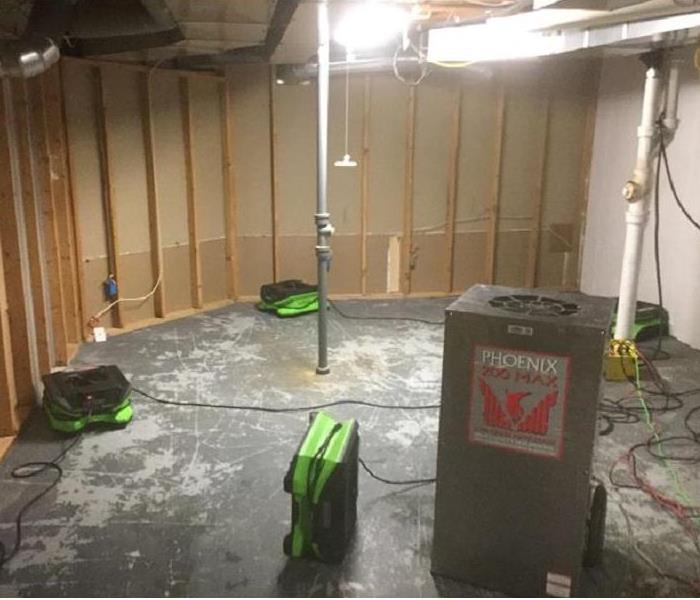Role of Air Movement for Evaporation
5/6/2020 (Permalink)
Two aspects of air movement influence evaporation of moisture from materials.
- Velocity- The speed of the air moving across surfaces.
- Volume- The quantity or amount of air moving during a period of time.
Velocity is a multiplier in the evaporation process, multiplying the rate that evaporation occurs. The velocity of airflow is comparable to wind speed. Higher wind speed will result in higher evaporation rates. Likewise, the faster the velocity of air moving over a wet surface, the better the rate of evaporation will be. Velocity is measured in feet per second (FPS), feet per minute (FPM), or miles per hour (MPH), and can be determined using an anemometer.
Volume is critical to the circulation of air. Airflow used for drying must have high wind speed, but that wind must be dry air. The source of dry air usually is a mechanical dehumidifier, though it could be the outdoor environment. Regardless of source, the dry air must be distributed or circulated throughout the affected area, much like the heated or cooled air from a home air handling system must be distributed throughout.
Moving air from one location to another is a product of mass, or volume, and is usually expressed in Cubic feet per Minute (CFM). We measure air movers in terms of CFM to indicate how much air the air mover is able to move around.
Restorers can better control air movement when they understand the roles of air volume and air velocity. Volume is not velocity. Adequate velocity is critical for increasing the rate of evaporation. Adequate volume is important when trying to circulate wet, dry air throughout especially large and complex structures.
SERVPRO of Fenton/South Ballwin professionals are here to help with all your drying needs.





 24/7 Emergency Service
24/7 Emergency Service